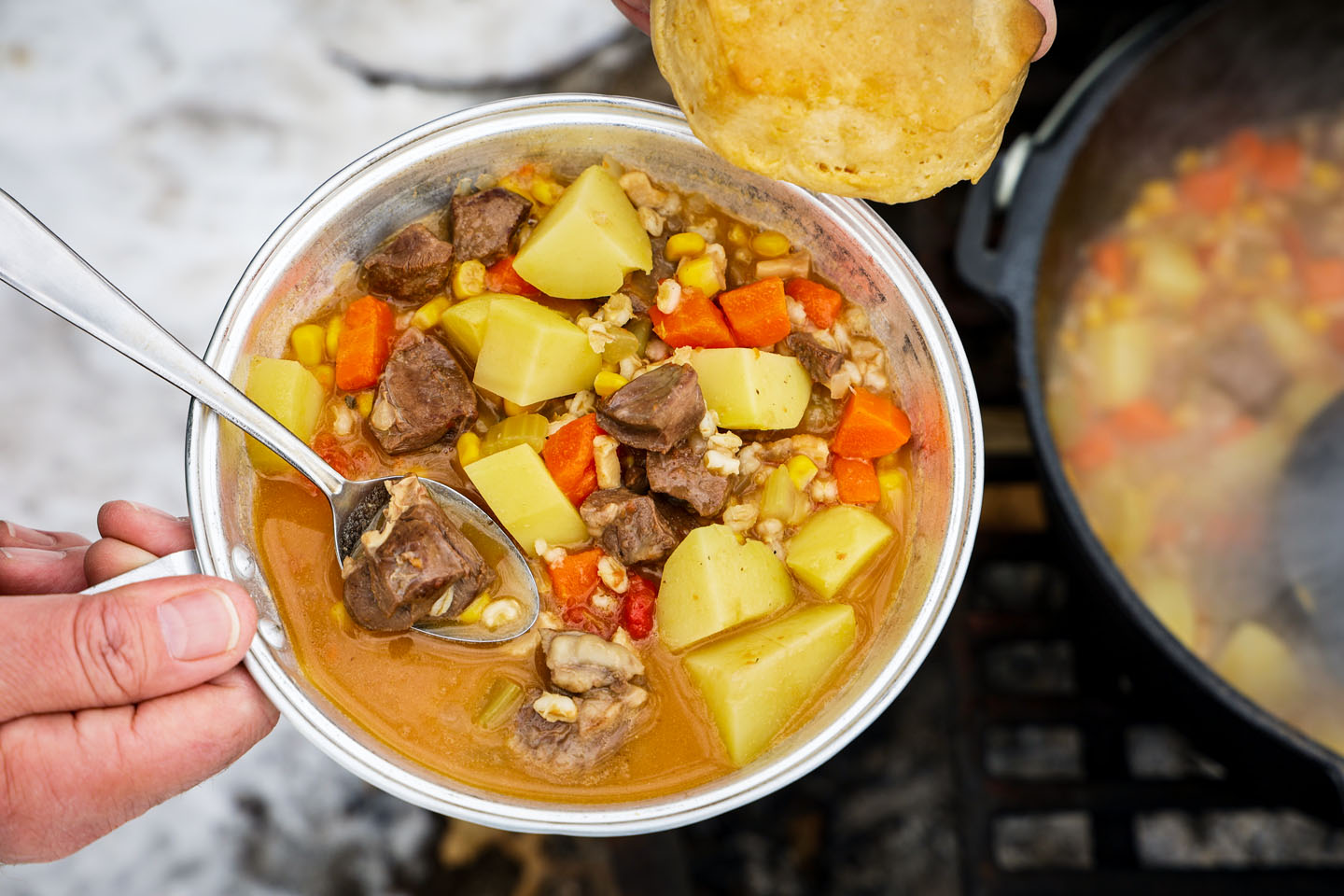
By Jenny Nguyen-Wheatley
Every January or February, I come down with the dreaded, mind-numbing angst of cabin fever. I don’t have motor oil in my veins, as I’ve heard said about tough Nebraskans, so when extremely cold temperatures strike and the roads are bad, I might stay inside for days, fighting the urge to rip out my hair. So, on those rare nice days — and by “nice,” I mean the wind isn’t howling and the temperature is above 30 degrees — I make the effort to get outside.
Last winter was especially brutal. After back-to-back snowstorms and frigid conditions in January, the weather finally broke. Missing the ability to cook outside, my husband, Rick, and I bundled up and spent an afternoon at Two Rivers State Recreation Area to enjoy lunch in the snow.
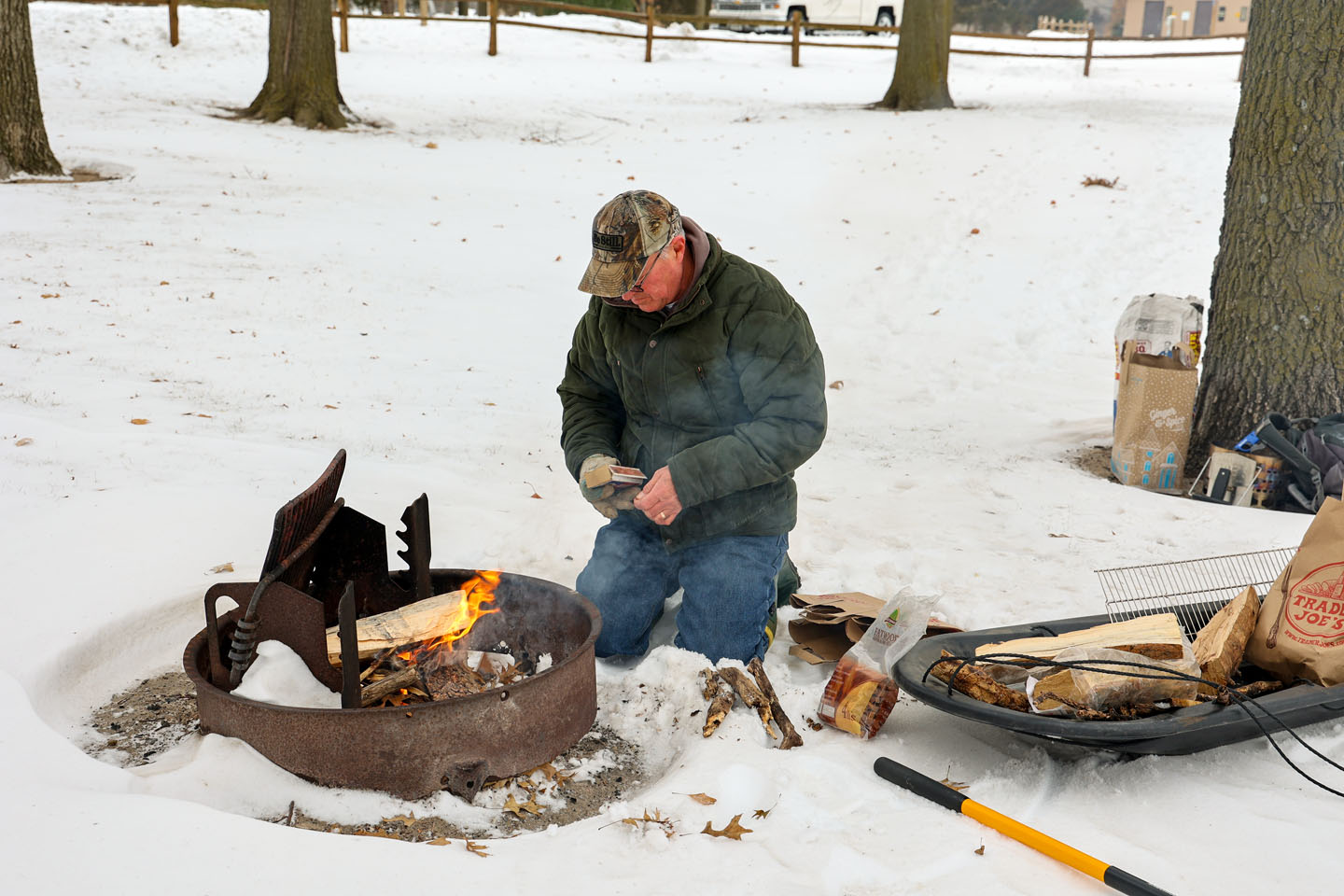
Using a deer sled, we dragged wood and cooking gear from the truck, dug out a fire ring and as the venison stew heated, Rick and I stood back to enjoy the warmth of the fire while soaking up the special kind of silence only heard in winter. Although I have visited Two Rivers on numerous occasions, January offered a stark contrast to the activity and noise of the high season. Not a soul was in sight. No tent or camper obstructed my view. It was one of those rare windless days. Despite my general feelings about winter, that particular afternoon was by no means unpleasant. While sipping from my hot mug of Irish breakfast, I felt a wave of relief after what seemed like the longest, most stifling bout of cabin fever in my nearly 12 years of living in Nebraska.
And lunch? Hot food simply tastes better when the weather is cold. Here are tips for enjoying a meal in the snow.
Building a Campfire
To build a campfire, you need to build heat gradually, and the three main components are tinder, kindling and wood. In the winter, don’t count on being able to find dried sticks and leaves, especially after a recent snow. Instead, avoid the frustration of having to ignite a wet fire starter by bringing your own tinder and kindling.
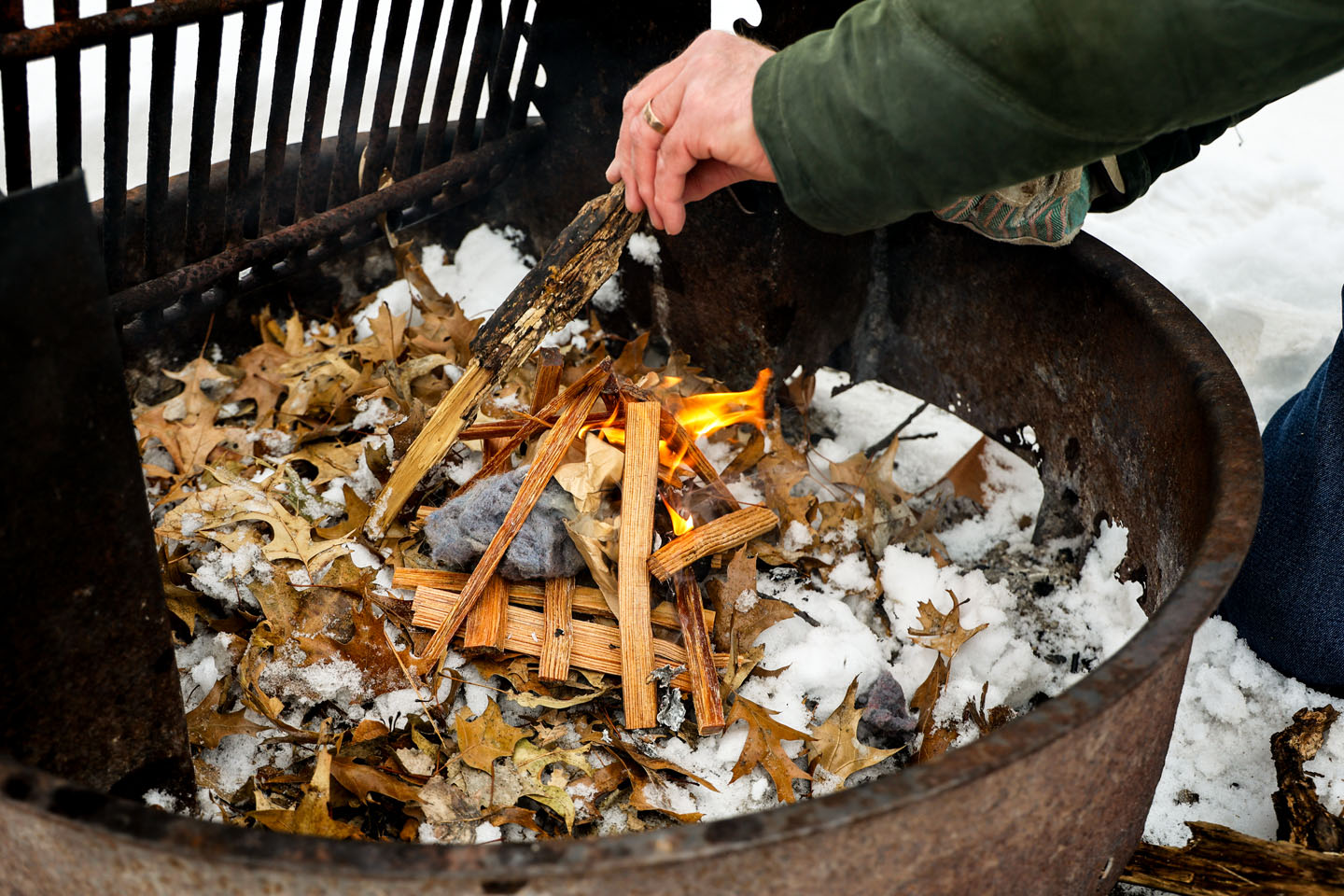
Old newspaper, paper grocery bags, dryer lint and cotton balls make good tinder because they ignite quickly. For kindling, buy fatwood fire starter, which are sticks of pitch pine that are impregnated with resin and are highly flammable. Use only local wood to prevent the spread of pests and make sure the wood is dry. Lastly, bring a shovel in case you need to dig out snow inside the fire ring.
First, assemble the tinder and kindling: Lay down several pieces of fatwood side by side, with an inch or two of space in between them. Then lay the same number of fatwood sticks on top perpendicular, with space in between — the spacing is important for airflow. Next, place pieces of tinder on top of the fatwood. Then lay pieces of fatwood around the tinder like a teepee.
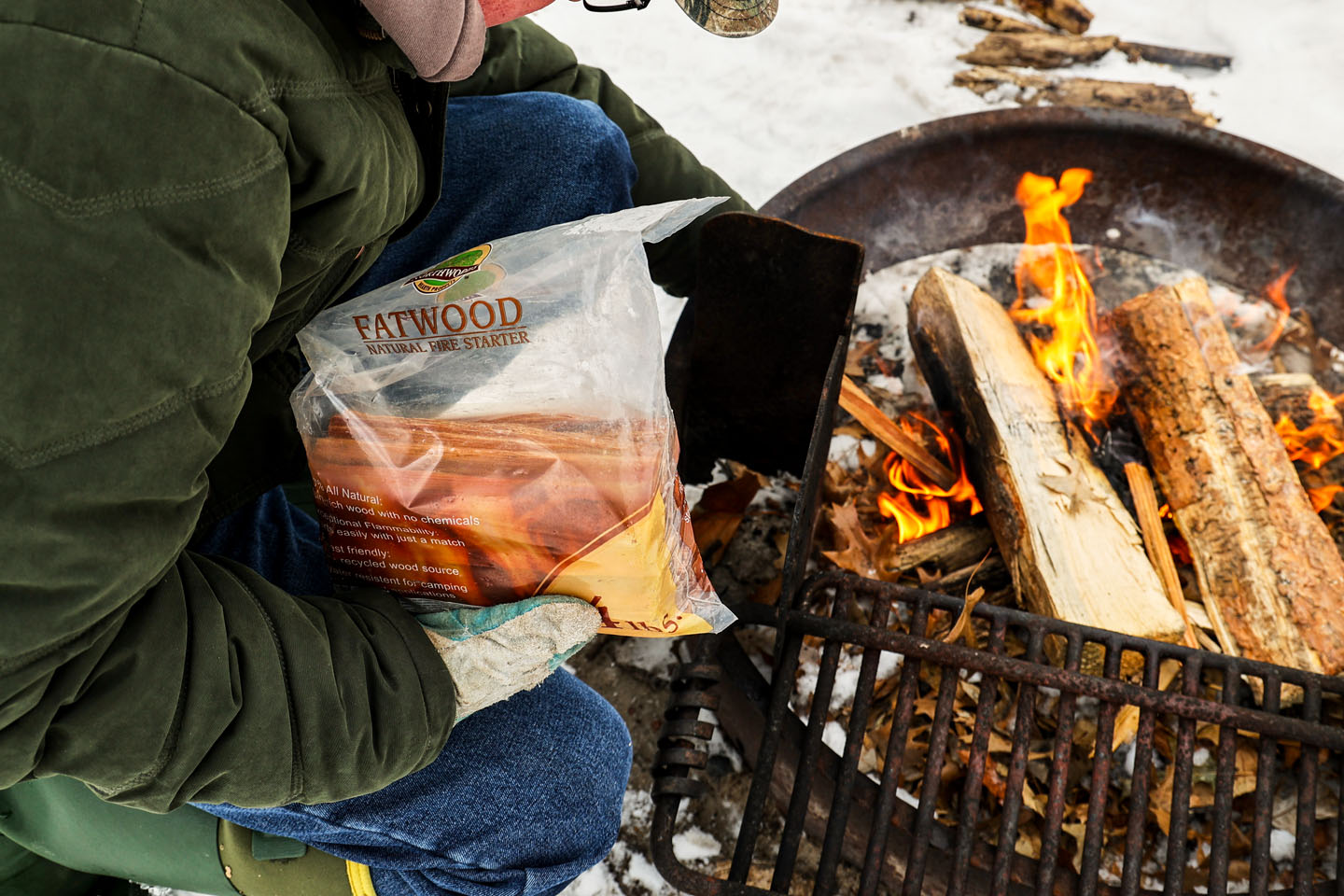
Use matches or a lighter to ignite the tinder, which should catch quickly. When the tinder gets hot enough, it will ignite the fatwood. Add more tinder as needed to increase heat. Once the fatwood is burning well, you can then add firewood on top, but only a couple pieces at first. If needed, add more fatwood to keep the heat going until the firewood starts taking. Then add more wood as needed.
Allow the wood to burn, while enjoying the warmth, conversation and coffee. When the flames die down and the wood starts to look more like embers of coal, that’s when your campfire is ready for cooking.
Equipment
In addition to the items previously mentioned, and whatever dinnerware and utensils you need, don’t forget the following:
- Over-the-fire grill grate, if applicable
- Dutch oven or cast-iron pan
- Lid lifter
- Mixing/serving spoons, ladle or tongs
- Heat resistant gloves
- Tea kettle
- Percolator or French press
- Paper towels
- Trash bag
Also, don’t let poor clothing decisions dampen your meal outdoors. As with any outdoor winter activity, wear clothing and shoes that are warm and will keep you dry. Although Rick, being old school, will opt for jeans every time, I prefer wearing waterproof or water-resistant pants to keep from getting wet if I have to kneel in the snow while tending to the food and fire.
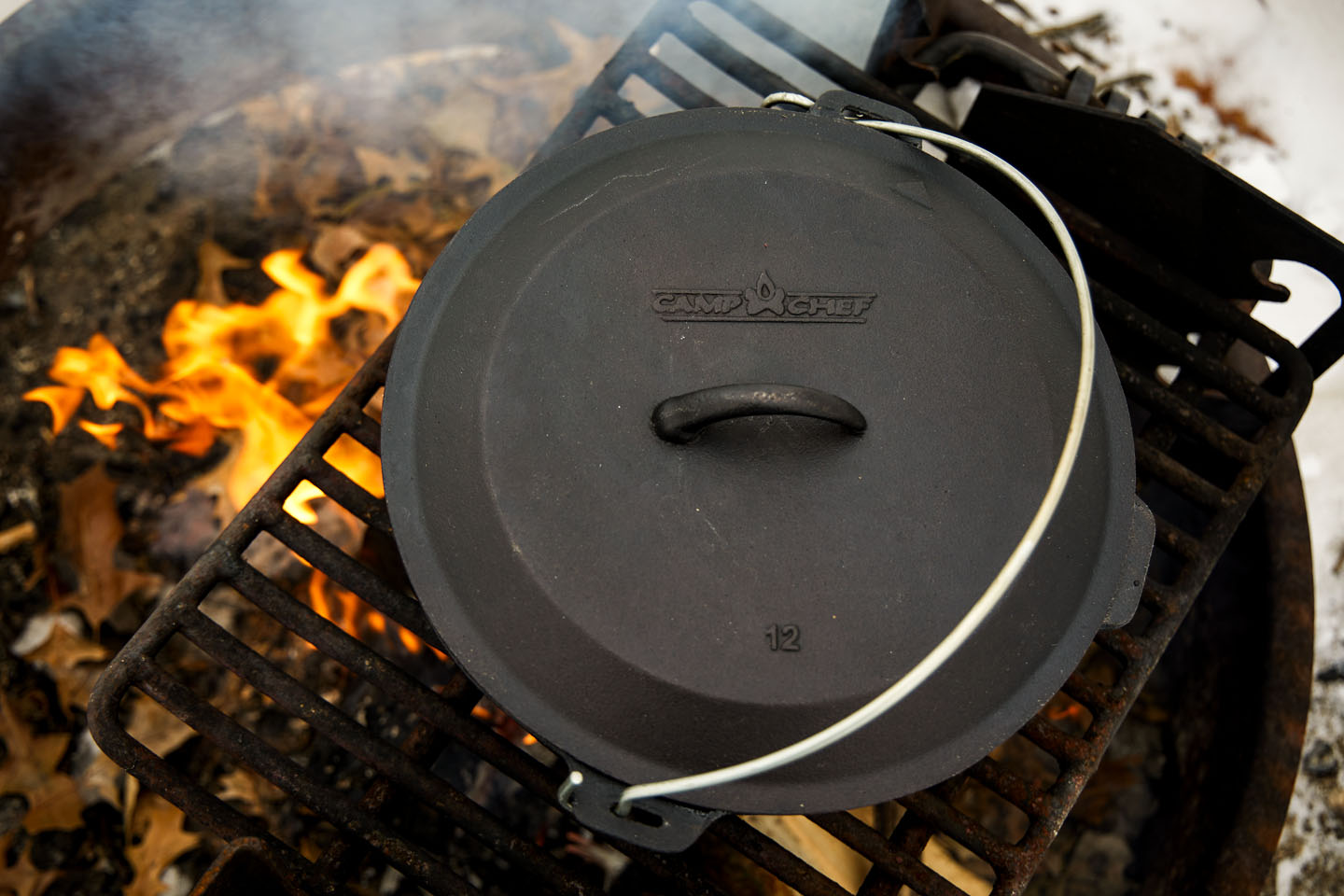
What to Cook
Winter outdoor cooking is not the time and place for fancy culinary tricks. Pick food that is hot, filling and easy to cook or warm up — don’t keep people waiting. Your companions will be more willing to stay out longer if their bellies are full and warm.
Stew, soup or chili are good choices because you can prepare them at home, and they’re one-pot meals. Pack it up in leak-proof containers and simply reheat it in a Dutch oven when you get to your destination. If you’ve got leftover stew or soup sitting in the freezer, this is the time to use it. Stir often if your stew or chili is on the thicker side to prevent the bottom from scorching.
Prebake biscuits and breads at home. Wrap them in foil to prevent blackening from the campfire soot while reheating.
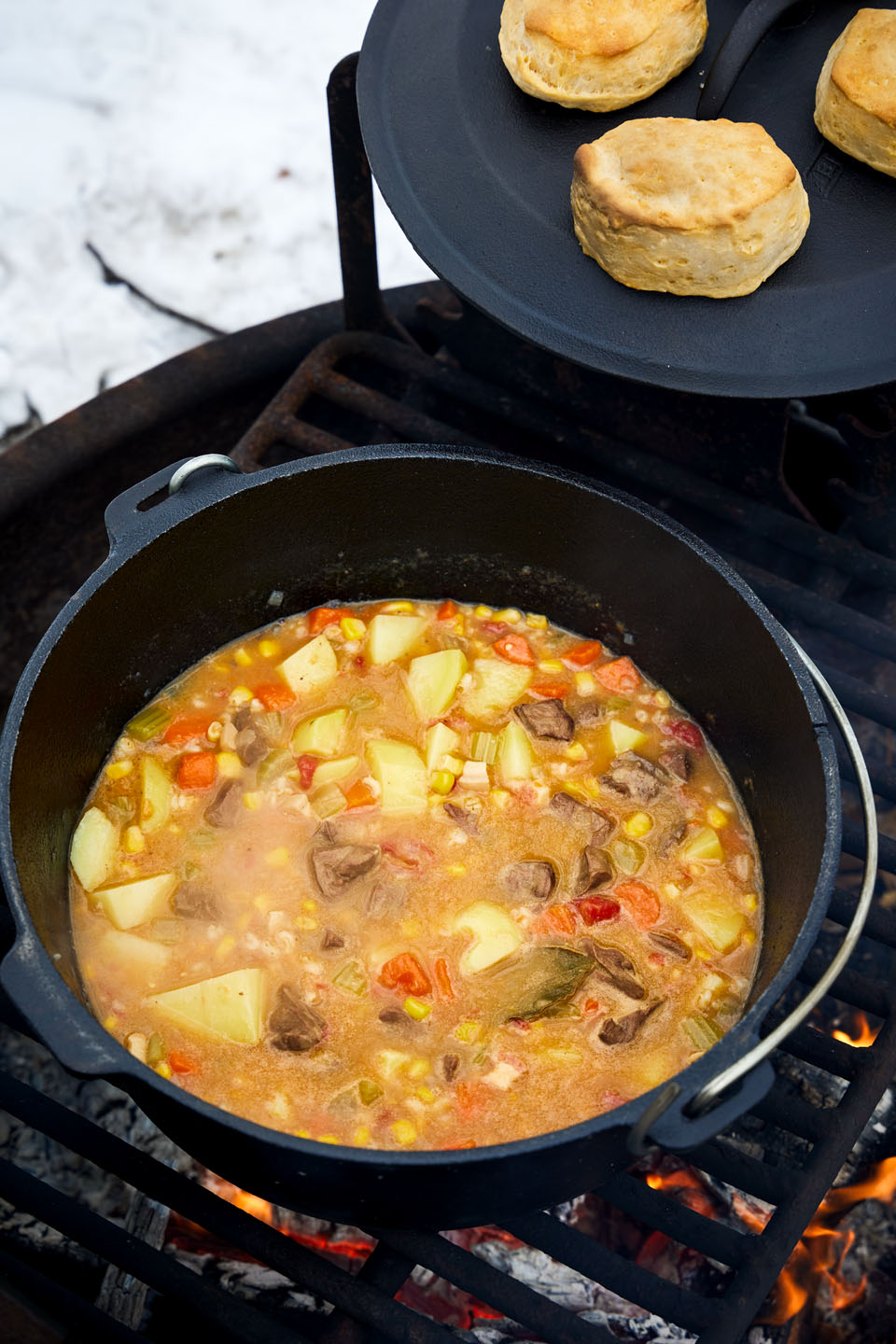
A hot beverage is a must. If you’re not a coffee snob and can do without a French press, bring a large thermos of ready-made coffee. Spiced cider or hot mulled wine might be appreciated, too, where alcohol is allowed. Bring a kettle for boiling water if offering tea bags or instant hot chocolate or coffee. Have everyone bring their own insulated mugs to keep down the trash, as park services might not be fully available this time of year.
After lunch, provide marshmallows for making s’mores. Add more wood to the hot embers to get the fire going again.
Clean-Up
Pack out leftover food and trash. If you need to clean out a pot or mug, use the snow. While you’ll still have to give your cooking gear a proper once-over at home, snow is slightly abrasive and will help remove most food particles. To prevent rust, clean and dry cast iron thoroughly, and lightly coat it with oil when you get home. With outdoor cooking, the more you keep things simple, the easier cleanup will be.
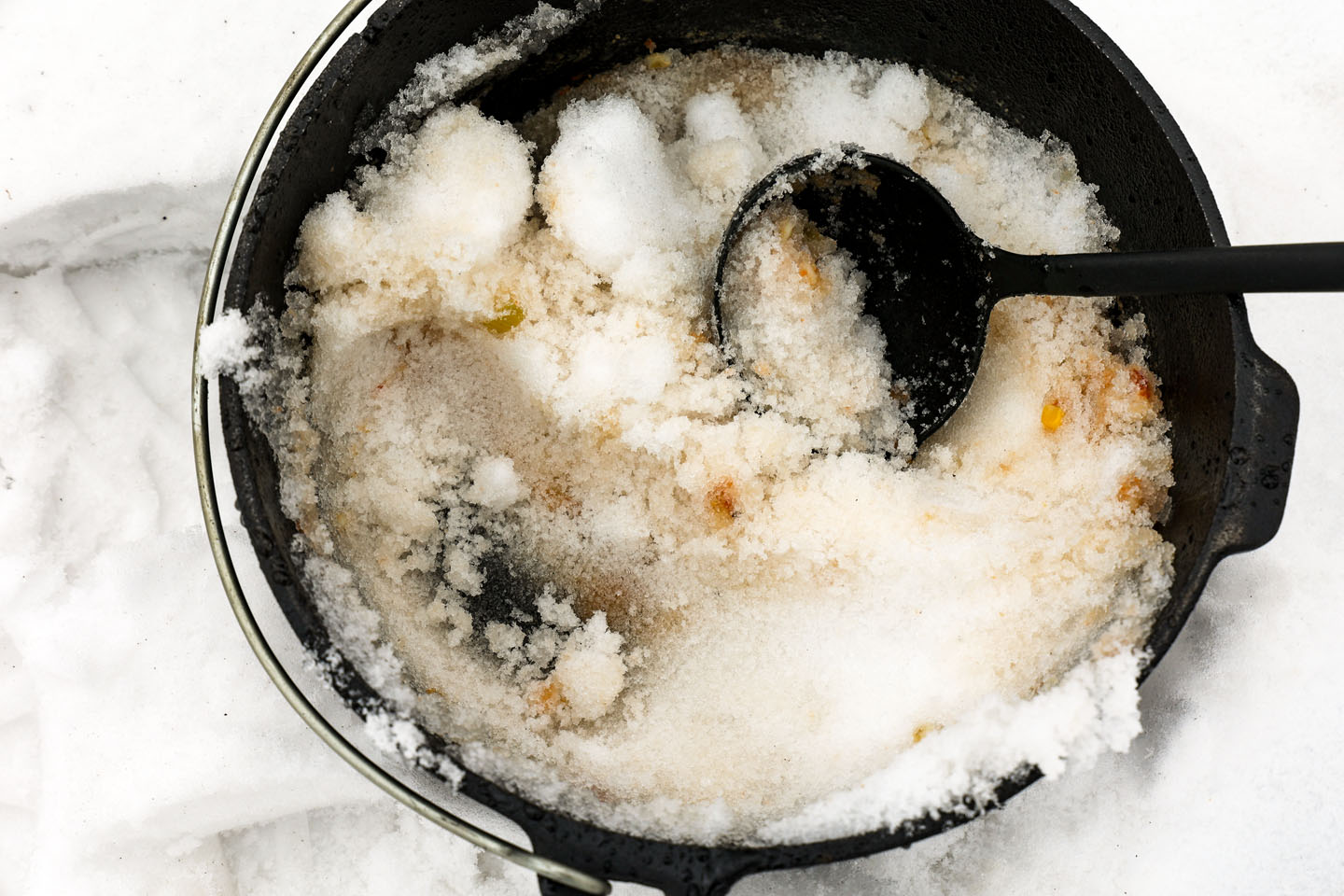
This winter, keep an eye on the forecast. If there’s a nice day on the horizon or if you have the ability to pick up and go at the last minute, get out and share a meal with family and friends in the wintery landscape. It just might be the cabin fever cure you’ve been searching for.
